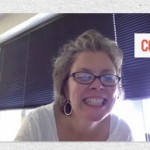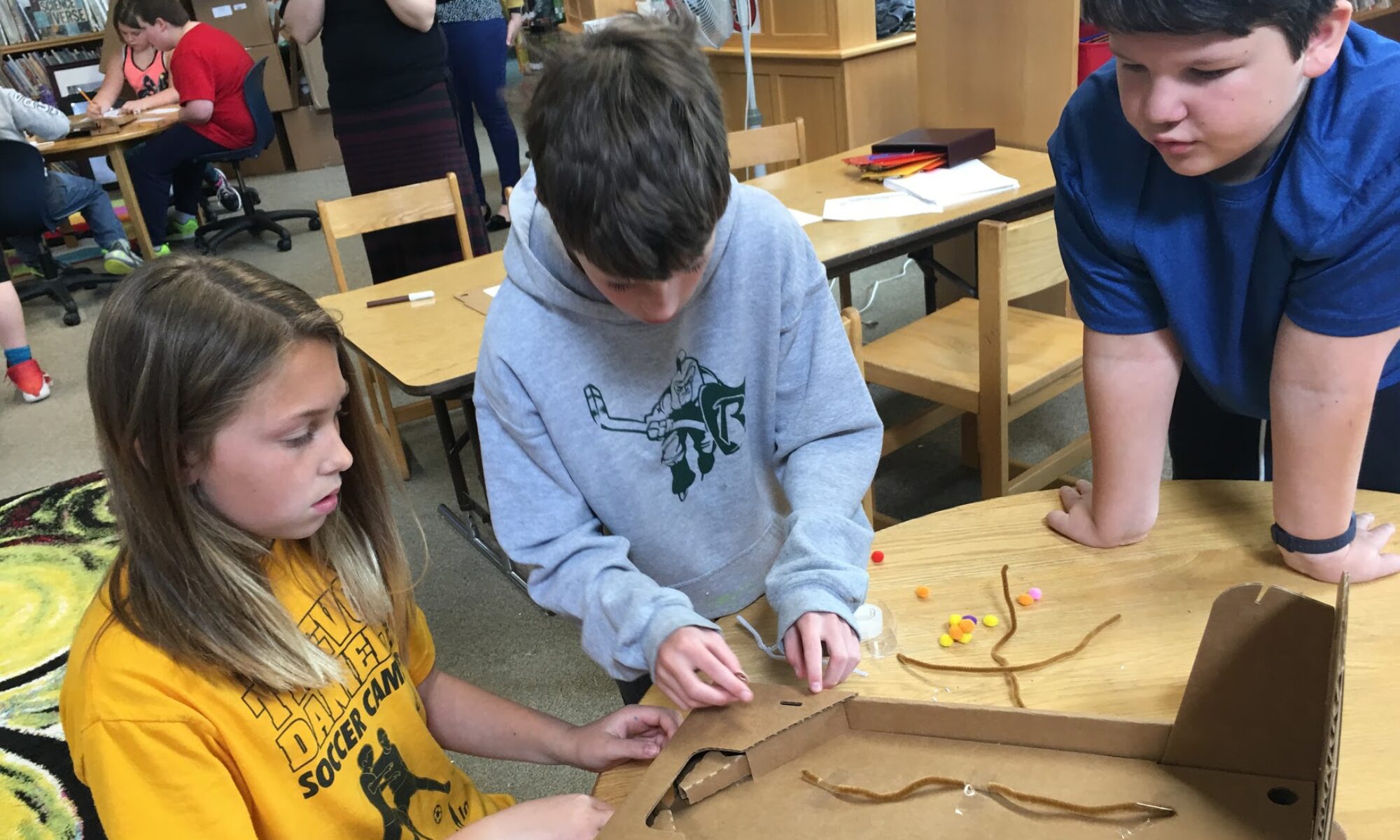The return to school is usually filled with excitement, anticipation, and maybe a little nervousness. This year though? Much more nervousness with the excitement. How can we anticipate what it will take to keep teachers and students safe? While each of our communities and school leadership put their hearts and minds into that question, we’re looking at what we know works for a return to remote and blended learning. We’re going small, and keeping it simple. Returning to the basics. We asked each of our professional development coordinators for their best piece of advice on the return to school in this exceptionally challenging year.
What one word would they provide as a guidepost?
Emily Hoyler: “Re-center.”
 I tend to dream big and that’s great. But when it comes time to bring those ideas into reality, all my grand plans can be a bit overwhelming. (Can you relate?)
I tend to dream big and that’s great. But when it comes time to bring those ideas into reality, all my grand plans can be a bit overwhelming. (Can you relate?)
But the best advice I’ve heard lately was: how can you make it smaller?
This is a reminder to create manageable and focused goals. Peel back the layers to find the best bits, and focus deeply and intentionally on those.
But the hard part can be figuring out which bits. So I offer this:
One of my favorite books to begin the school year with is The Three Questions by John Muth. In this tale, which is based on Tolstoy’s work with a similar name, a young boy is seeking answers:
- What is the best time to do things?
- Who is the most important one?
- What is the right thing to do?
Spoiler alert: I’m going to tell you Tolstoy’s answers to those three questions. Here are they are: The best time is now, the most important one is the ones you are with, and the right thing to do is to do good for those you’re with…right here. Right now.
I typically use the text to set the scene for my classroom culture and community, to help students think about how to show up for each other. But I think these questions can guide us here.
What does it look like to do good for our students right now?
I think it means scaling back. Paring down. Focusing deeply on what matters. Relationships. Connection. Purpose. Reflection.
So when you look at the long list of all that you’ve been asked to do, can you ask yourself:
- What is the most important?
- What can I let go of (for now)?
- How can I make it smaller?
Let’s give ourselves permission to let go, narrow our scope, make things smaller, and honor what truly matters.
Jeanie Phillips: “Hyperdocs”.
 If I were headed back to the classroom this fall my head would be spinning! Should I plan for remote learning? Should I prepare for in-person learning? Or both? What is an educator to do?
If I were headed back to the classroom this fall my head would be spinning! Should I plan for remote learning? Should I prepare for in-person learning? Or both? What is an educator to do?
The solution I’m offering is the Hyperdoc: an organized way to plan for your learners that works virtually, in person, or in a hybrid model.
What’s a hyperdoc?
A hyperdoc is an organized instructional unit that curates all of the resources, materials, practice, and assessments in one place. Using UDL and backward design, educators can plan thoughtful instruction that is aligned to proficiencies and provides voice and choice for students.
And while the typical hyperdoc is designed so each student has their own copy, this format could also be used by collaborative groups so they can work together at a safe social distance.
Rachel Mark: “Re-connect”.
 One of the most fundamental purposes for re-opening schools this fall is to rekindle human connections and relationships.
One of the most fundamental purposes for re-opening schools this fall is to rekindle human connections and relationships.
In my capacities as both a parent and an educator, I perceive daily advisory to be absolutely essential for this school year.
Whether it’s face-to-face, virtual, or a hybrid of both, there are many ways that educators can use advisory to build relationships, develop community, and help students feel a sense of belonging. Earlier this year, I wrote about a format for conducting virtual advisory with students. In that post, I called it morning meeting, which I consider to be a very similar concept to middle school advisory.
Advisory sessions should be an opportunity for people — adults and students — to relate with one another, feel connected, and have a little fun. And as educators, let’s find ways to help students feel safe and supported and individually willing to turn their cameras on. Let’s behave like guests in their homes so they’re willing to be face-to-face with us for yes, more connection.
Last year, we published ideas on our blog for activities that could be used in a virtual advisory or morning meeting.
In June, I taught a graduate course for educators that promoted virtual advisory as a critical component for this upcoming school year.
It was my favorite part of the day.
And I believe it was a similar highlight for my students.
Life LeGeros: “Project-Based Learning cycles.”
 Teachers are being put in a tough situation right now (understatement of the century, I know). You’re being asked to put relationships and connection first while developing curriculum that is more engaging than ever. And to do so in a situation where the format might be face-to-face, remote, or hybrid, or all three with different students.
Teachers are being put in a tough situation right now (understatement of the century, I know). You’re being asked to put relationships and connection first while developing curriculum that is more engaging than ever. And to do so in a situation where the format might be face-to-face, remote, or hybrid, or all three with different students.
My suggestion is to do as much planning up front as possible to provide time for individualized feedback and support when students kick things into gear. This will also allow creative energy to be funneled into community building.
Where do cycles come in?
If you can create choices that students can explore through a consistent process, then you can run a few cycles where students get to choose a focus area each time.
For example, the Humanities team at Orleans Elementary School (Andrea Gratton and Kyle Chadburn) created the Humanities Expeditions Project last spring. Students start each two-week cycle by choosing to explore an “expedition” area such as sports, the future, heroes, or social justice. They spend time with resources in that topic area for the first week and reflect on what they learned. Then in week two, they write about it. Students receive feedback on informational writing skills and self-direction. Lather, rinse, repeat.

Another example comes from the Imagining September project from MIT and Harvard. In the “School as Basecamp” storyboard (p. 11-12), students engage with a career exploration project during the first two weeks of school and then choose from modules that have been pre-designed by teachers. Modules blend skills and content, such as Writing to Persuade or Reading About Science. Modules last a month and culminate in a creative exhibition of learning.
Both of these cases require a fair amount of up-front work to structure the delivery method (may I suggest Hyperdocs?), provide resources for students to explore, and figure out how to introduce and scaffold the process. But like many project-based learning approaches, once things are underway teachers get to focus on being there for students.
It’s also an asset-based approach that capitalizes on the power of choices and builds on the self-direction skills many students deepened during the spring.
Scott Thompson: “Ask.”
 Let’s just acknowledge that this year is different. All your emotions are okay. And while significant challenges lie ahead, we cannot admire them. Educators are amongst the most talented, innovative, and passionate folks around. WE CAN DO THS! So let’s wonder what could it look like? How can it be different and better at the same time? Students will be showing up in some capacity and their energy will give us energy.
Let’s just acknowledge that this year is different. All your emotions are okay. And while significant challenges lie ahead, we cannot admire them. Educators are amongst the most talented, innovative, and passionate folks around. WE CAN DO THS! So let’s wonder what could it look like? How can it be different and better at the same time? Students will be showing up in some capacity and their energy will give us energy.
As we show up, and as our students show up, let’s not be afraid to ask for things. Ask for help. Ask for reassurance. And ask for space.
Let’s be kind to ourselves as we focus on coming together for such a mighty, mighty lift. Let’s step back when we need, and let’s make noise as we plan. Advocate for ourselves and our communities.
And above all, let’s listen to students.
Susan Hennessey: “Plan P”.
 We all need to build learning opportunities based on multiple scenarios. Think of it less like having a Plan B, and more like a Plan P: pivoting to new contexts with intention.
We all need to build learning opportunities based on multiple scenarios. Think of it less like having a Plan B, and more like a Plan P: pivoting to new contexts with intention.
One way to do so is to have a multitude of content in a number of different media at the ready so students have choice of access points to engage with content. If they can’t benefit from an in-person lecture / discussion, they will be well served by an engaging video with short stopping points for reflection built in via EdPuzzle, or a podcast followed by a collaborative discussion board via Padlet, or a piece of informational text they can collaborative mark up in ActivelyLearn of Hypothes.is.
Flower Darby in Small Teaching Online: Applying Learning Science in Online Classes advises:
“Take a little time to find relevant videos, audio recordings, and images…Find and share impactful pieces of content that add depth and breadth to your existing instructional materials. This will help students gain a richer understanding of the nuances of your subject.”
So, how to do so efficiently and effectively? Take advantage of Open Educational Resources like CK-12, OERcommons, and Curriki to find ready-to-use content. And don’t forget CommonLit to find texts for all reading levels and needs. These tools allow busy educators to easily search by content standard, grade range, and topic.
Teachers, we want you to be: safe.
We are excited for the possibility of seeing this fundamental disruption to school as we know it, as an opportunity to explore and create new ways of learning. Ways that honor student voice and drive, that create truly flexible pathways for students to move out of school buildings and into their communities. We are hoping students can explore what intrigues them about this world, and share who they are and what they’ve learned through their PLPs, and via student-led conferences (whatever those will look like). What are your students learning and doing during this time? How can we assess the new skills they gain? And how do we level the playing field in terms of racial, social, economic and intersectional equity?
But all of these questions are immaterial without teachers and students being truly safe in their learning environments.
Reach out if you need us. We will support you however we can.


